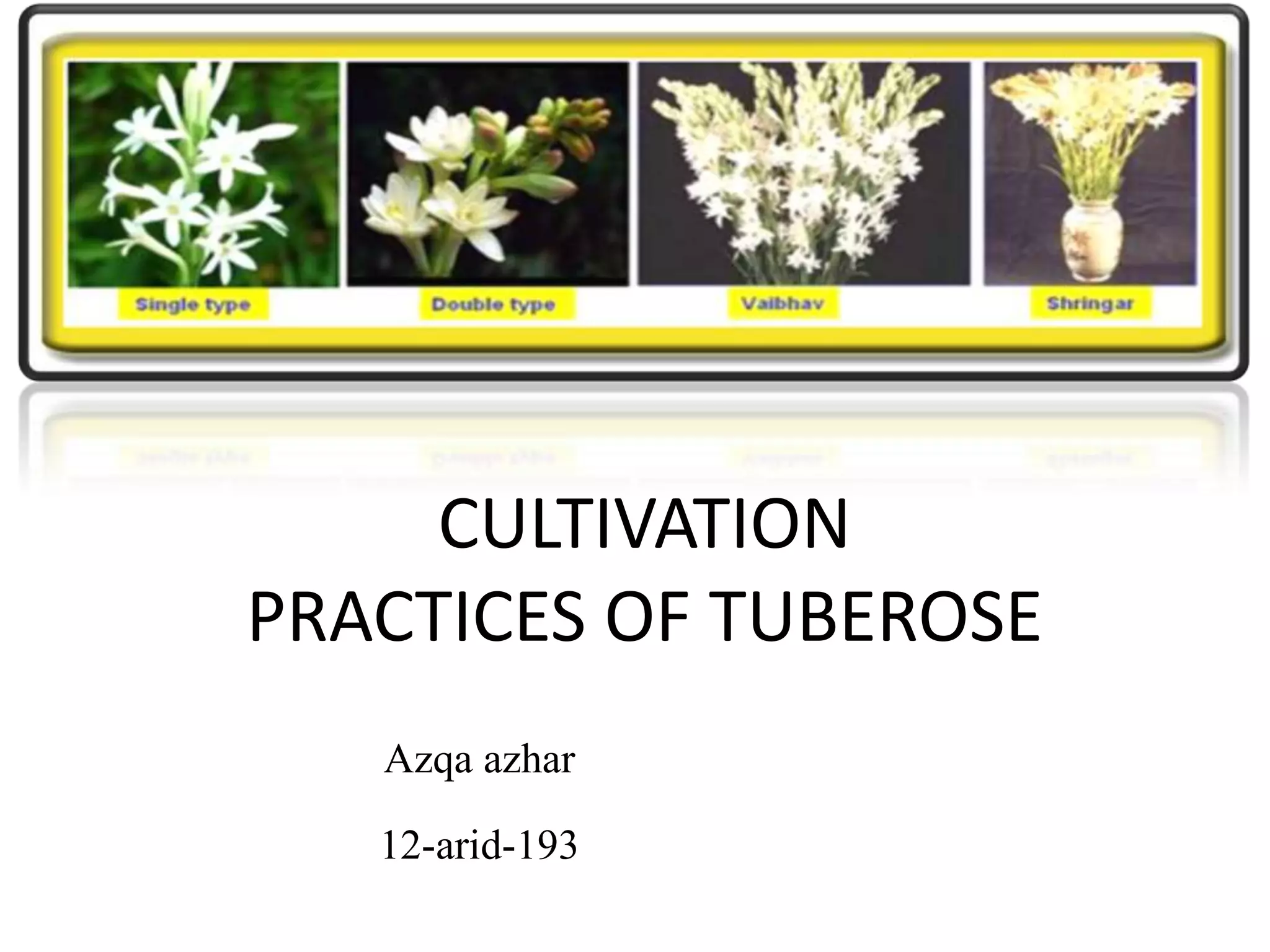This document summarizes the cultivation practices of tuberose. It describes the botanical details of tuberose and discusses propagation through bulbs or bulb segments. Ideal growing conditions including climate, soil type, and spacing are outlined. The document also covers cultivation processes such as site selection, soil preparation, planting, irrigation, fertilization, pest and disease management, harvesting, post-harvest handling, and yield. Common tuberose varieties grown for their fragrance in cut flowers and essential oils are also mentioned.























